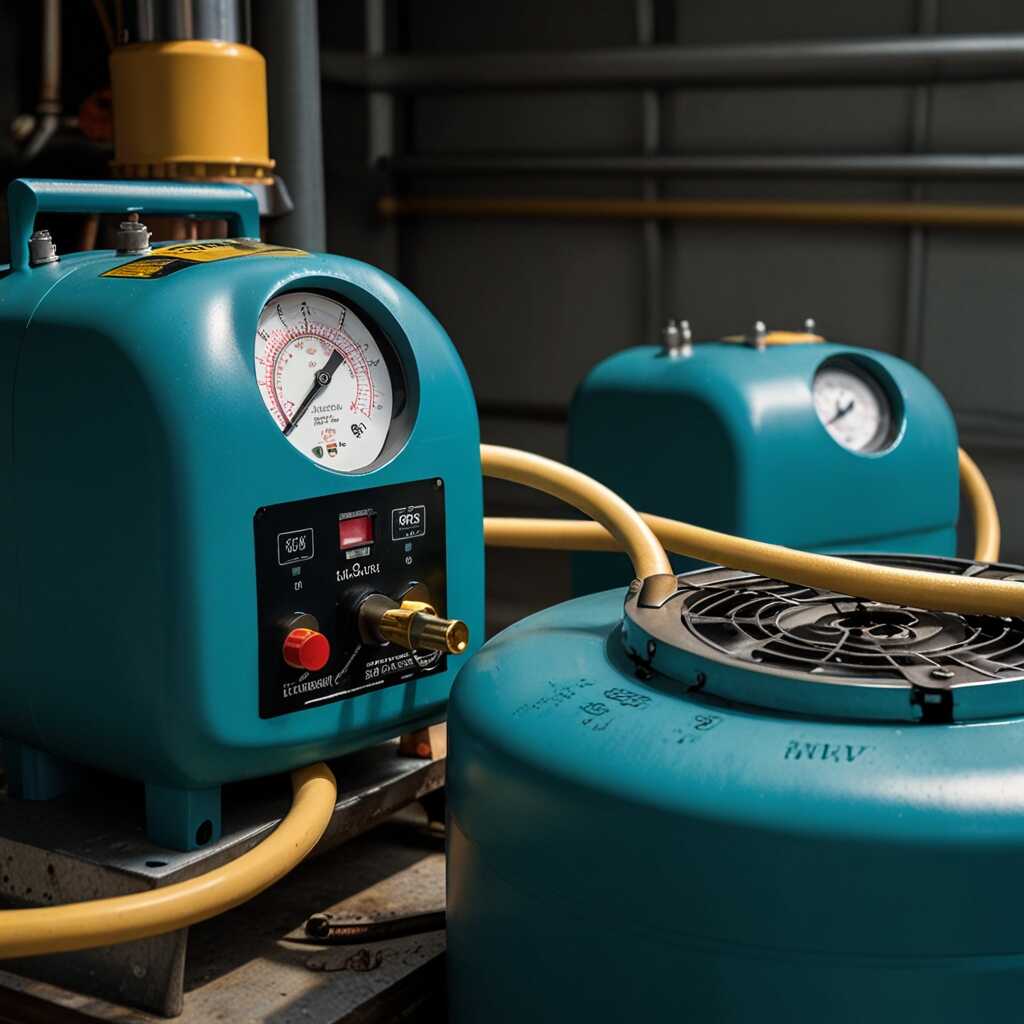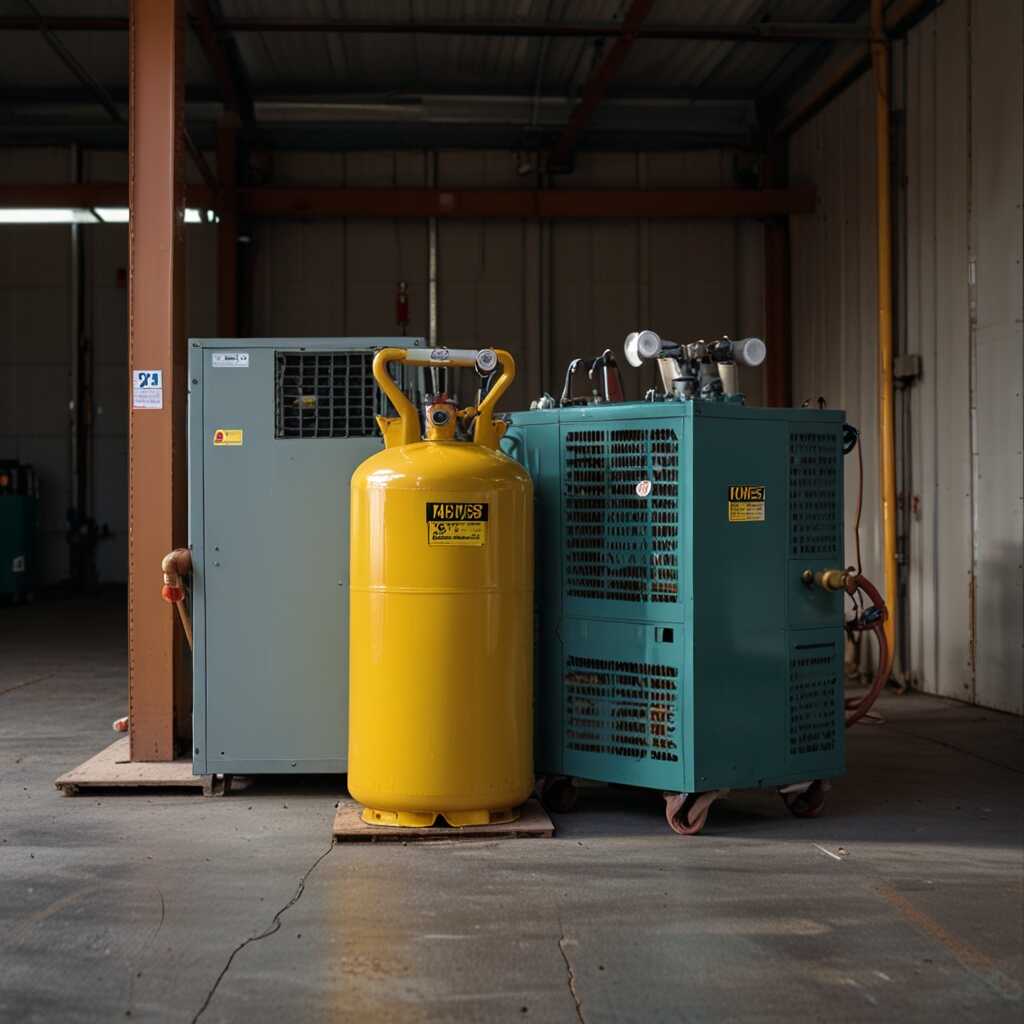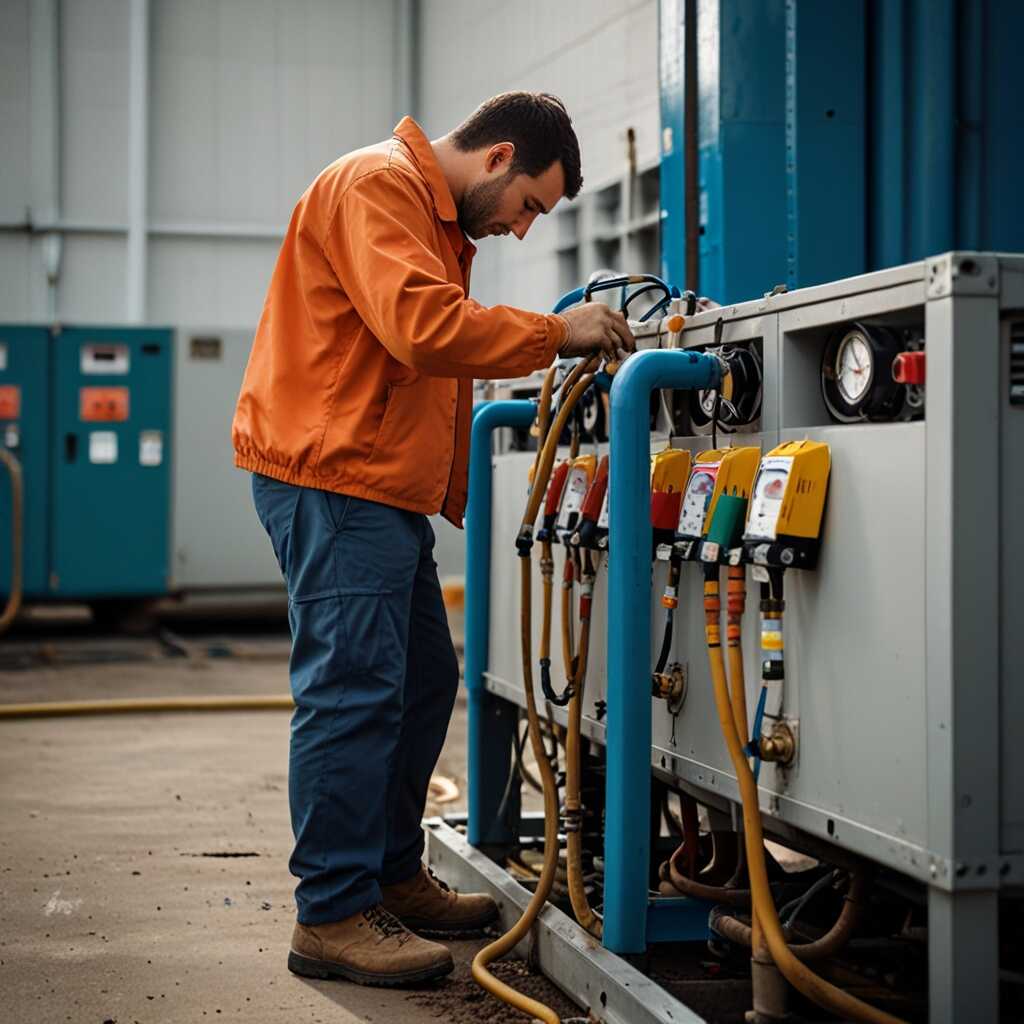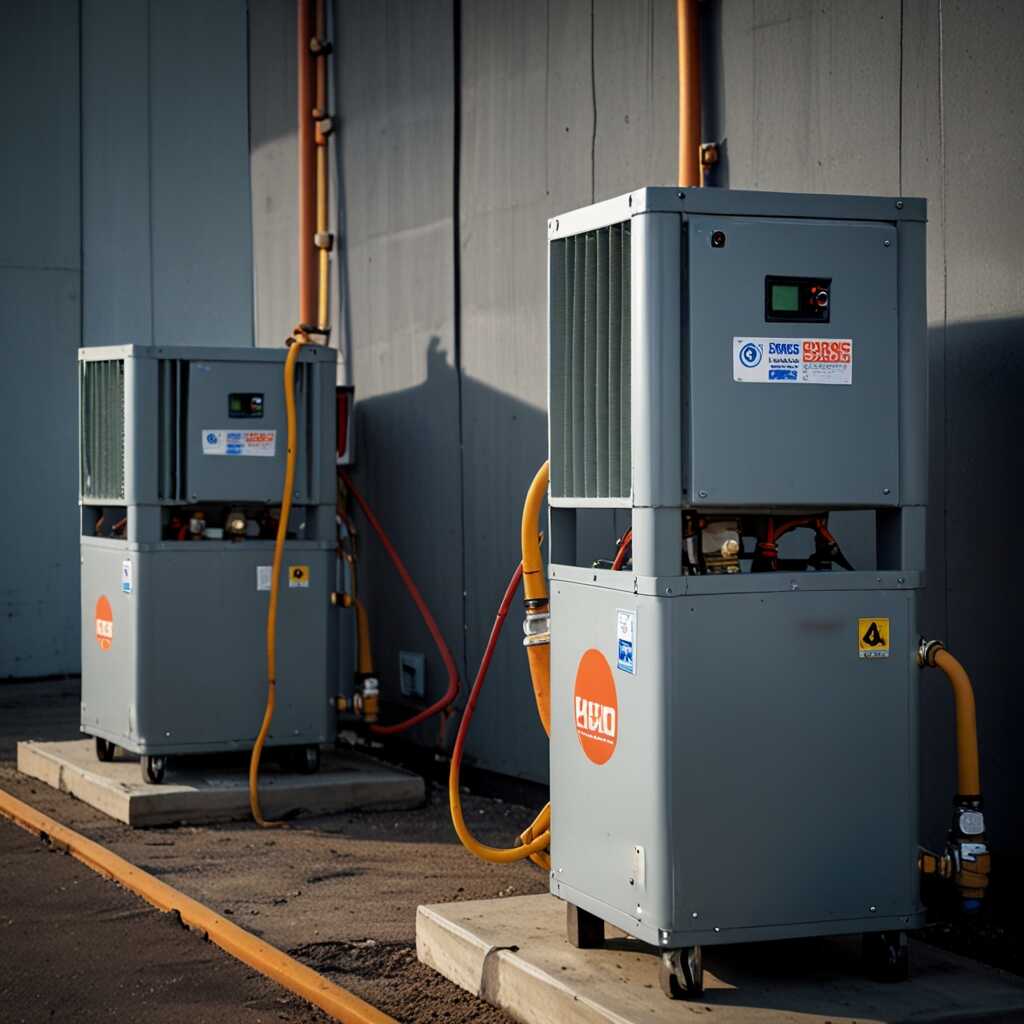Measuring refrigerant recovery machine efficiency to cut costs is essential for optimizing HVAC operations. Understanding how to evaluate these machines helps in reducing operational expenses and improving performance. Refrigerant Recovery Pro provides expert guidance for HVAC professionals looking to assess their equipment effectively. With a focus on technical support and regulatory compliance, we aim to enhance your refrigerant management practices.
Essential Metrics for Evaluating Refrigerant Recovery Efficiency
Key performance indicators (KPIs) critical for assessing refrigerant recovery machines include recovery rate, recovery time, and recovery efficiency. Recovery rate measures how much refrigerant can be extracted in a given time frame. Different refrigerant types can impact recovery efficiency significantly, as each type has unique properties influencing how easily it is recovered. For residential HVAC systems, the average recovery rate typically ranges from 2 to 12 pounds per minute, depending on the system design and refrigerant type. Understanding these metrics helps improve equipment efficiency and manages operational costs effectively.
Understanding Recovery Rate and Its Importance
The recovery rate is a crucial metric for HVAC technicians. It indicates how quickly a refrigerant recovery machine can extract refrigerants from a system. For optimal performance, a recovery rate of 4 to 10 pounds per minute is recommended for residential units. This rate ensures the machine handles various refrigerants effectively, thereby enhancing operational efficiency. Machines with higher recovery rates often feature advanced compressor designs and larger storage capacities. Evaluating the recovery rate alongside other performance indicators helps HVAC professionals ensure reliable operation and meet regulatory compliance.
Techniques for Analyzing Refrigerant Recovery Machine Performance
Evaluating the performance of refrigerant recovery machines involves key performance indicators like recovery efficiency, recovery time, and reliability. Different refrigerant types can significantly affect these indicators. For example, some machines handle HFCs better than HCFCs. Modern refrigerant recovery machines typically achieve an efficiency percentage ranging from 90% to 95%. This efficiency ensures minimal refrigerant loss during the recovery process, which is essential for ensuring compliance with environmental regulations.
Essential Techniques for Recovery Machine Testing
To effectively analyze refrigerant recovery machine performance, it is essential to utilize specific testing techniques. This includes using flow meters to monitor refrigerant recovery rates and pressure gauges to assess system pressure levels. Regular reviews of machine performance can highlight durability and reliability issues. Keeping detailed logs of recovery efficiency helps establish a proven track record of performance over time. HVAC technicians should perform systematic tests at regular intervals, as this enhances their understanding of machine capabilities and ensures optimal performance.

Factors Influencing Refrigerant Recovery Machine Performance
Several key factors impact the efficiency of refrigerant recovery machines. The type of refrigerant plays a major role. For example, some refrigerants recover faster than others due to their chemical properties. Environmental conditions also matter significantly; high temperatures can affect a machine’s ability to recover refrigerants effectively. Additionally, the features of the recovery machine influence its performance. Machines designed with advanced compressors often provide better efficiency. Regular testing and reviews can highlight areas for improvement in recovery processes.
Understanding Refrigerant Type and Its Impact on Efficiency
The type of refrigerant affects the recovery efficiency of HVAC systems. Hydrogenated refrigerants, like R-410A, provide faster recovery rates than older types, such as R-22. Manufacturers design machines to handle varying refrigerant types, ensuring optimal performance. Testing these machines helps technicians understand which models offer the best recovery rates for different refrigerants. The proper selection of refrigerant based on the equipment will enhance overall efficiency. Regular and thorough reviews of machines support more data-driven decisions, improving the operational pipeline in HVAC settings.
Numerical Insights on Recovery Machine Metrics
- Recovery machines can remove up to 99% of refrigerants from systems.
- The average cost of refrigerant recovery machine ranges from $500 to $3,000.
- Efficiency ratings typically range from 0.5 to 10 CFM (cubic feet per minute).
- High-performing machines recover refrigerants within 15 to 30 minutes.
- 90% of HVAC repairs involve systems that should have had recovery preemptively performed.
- Proper maintenance can increase a machine’s lifespan by up to 50%.
- Annual refrigerant recovery training can boost technician efficiency by 20%.

Implementing Best Practices for Refrigerant Recovery Operations
Implementing best practices can dramatically enhance refrigerant recovery efficiency. Essential methods include regularly maintaining and testing equipment, utilizing proper recovery techniques, and training staff. These practices can reduce operational costs and improve recovery success rates. Factors like the design of the refrigerant recovery machine, the ambient conditions during recovery, and understanding the refrigerant type are vital for optimal performance. Research shows that facilities applying these methods can see substantial savings, sometimes reducing recovery costs by up to 30%.
Key Techniques to Enhance Refrigerant Recovery
To enhance refrigerant recovery, focus on training staff in efficient recovery techniques and using high-quality equipment. Ensure recovery machines are EPA-certified and regularly serviced to maintain reliability. The use of recovery units designed specifically for different refrigerants, such as hydrocarbons or blends, can yield better results. Regular testing and data review are essential to understand the performance of each unit. Facilities that apply these key techniques experience improved recovery success rates and lower operational costs.

Recommended Tools for Measuring Recovery Efficiency
To assess the efficiency of refrigerant recovery machines, consider tools like high-quality gauges, flow meters, and recovery unit monitors. These tools provide reliable data on system performance. Gauges help measure pressure and temperature accurately, while flow meters can assess refrigerant flow rates. Recovery unit monitors deliver real-time data on recovery progress and performance metrics. Using these measuring efficiency instruments assists in identifying potential system flaws, ensuring that the refrigeration process is sound and cost-effective.
Choosing High-Quality Refrigerant Recovery Tools
Selecting the right refrigerant recovery tools is essential for HVAC professionals. Look for performance testing equipment that features high reliability and durability to withstand demanding conditions. Tools should deliver accurate readings quickly, enabling timely adjustments. Consider devices designed for ease of use, with clear displays for readability in various lighting. Options that are lightweight yet sturdy provide excellent portability for technicians on the go. Quality gauges combined with flow meters significantly enhance the accuracy of HVAC refrigerant analysis.
Key Advantages of Optimizing Recovery Performance
- Greater recovery efficiency reduces operational costs significantly.
- Improved performance lowers refrigerant loss, promoting environmental compliance.
- Enhanced machine efficiency reduces the need for frequent repairs.
- Effective recovery increases system longevity and reliability.
- Better recovery practices can lead to more satisfied customers.
- Efficient operations free up technician time for other important tasks.
- Higher recovery rates help meet stringent regulatory standards, ensuring compliance.

Challenges Affecting Refrigerant Recovery Efficiency
Several factors can hinder refrigerant recovery efficiency. Common issues include equipment reliability, insufficient testing of recovery machines, and technician experience. Equipment may lack proper calibration, which limits its ability to perform efficiently. Technicians with less experience may overlook vital procedures, resulting in inefficient recovery operations. Besides, understanding the specifications and features of different machines is essential for optimizing recovery rates. Regular equipment reviews and comparison of performance data can uncover reliability issues that need addressing.
Importance of Technician Training in Enhancing Recovery Efficiency
Technician training plays a pivotal role in enhancing refrigerant recovery efficiency. Well-trained technicians understand the importance of following established procedures and using the right recovery machines. This knowledge enables them to execute recovery tasks efficiently, ensuring optimal refrigerant capture. Training programs should emphasize hands-on experience with various recovery machines and real-world troubleshooting scenarios. The more skilled a technician is, the better their ability to handle equipment and attain high recovery rates. This leads to improved operational efficiency and compliance with environmental regulations.
Understanding Regulatory Compliance in Refrigerant Recovery
Key regulations governing refrigerant recovery include the Clean Air Act, which dictates recovery practices for HVAC systems. The EPA’s Section 608 outlines specific requirements for recovering and recycling refrigerants. Compliance is essential to avoid penalties and enhance operational efficiency. Major agencies influencing refrigerant recovery include the EPA, DOE, and local regulatory bodies, which collectively ensure consistent practices across industries. Understanding their roles helps HVAC professionals navigate compliance effectively. Regarding EPA guidelines, technicians must recover at least 90% of refrigerants in most applications, avoiding hazardous releases into the environment.
Essential Roles of Regulatory Agencies in Refrigerant Recovery
Regulatory agencies like the EPA, Department of Energy (DOE), and state environmental authorities play critical roles in refrigerant recovery. The EPA ensures compliance through regulations that define proper refrigerant management practices. The DOE supports energy efficiency and conservation, impacting the operational standards HVAC systems must meet. These agencies collaborate to enforce standards, conduct inspections, and provide guidelines to HVAC professionals. Understanding these roles helps ensure your refrigerant recovery practices are compliant, improving operational efficiency and protecting the environment.
Brands and Their Impact on Recovery Machines
- Brand A offers reliability and ease of use, ideal for small HVAC firms.
- Brand B is known for its high efficiency, suitable for larger operations.
- Brand C has affordable pricing, making it good for budget-sensitive training programs.
- Brand D provides advanced features, perfect for experienced technicians.
- Brand E focuses on portability, great for on-site recovery tasks in varied locations.
- Brand F emphasizes durability, making it suitable for demanding industrial applications.
- Brand G offers comprehensive support, ideal for HVAC businesses wanting expert advice.
Exploring Innovations in Refrigerant Recovery Efficiency
Latest technologies improving refrigerant recovery efficiency include advanced compressors and smart monitoring systems. These innovations enhance recovery speed and accuracy. Energy-efficient machines can reduce operational costs significantly. A performance comparison of different refrigerant recovery machines shows varying recovery rates. Research indicates that machines achieving a recovery efficiency standard of 90% or more are becoming the industry benchmark by 2025, helping HVAC professionals optimize performance.
Key Features of Innovative Refrigerant Recovery Machines
Innovative refrigerant recovery machines are designed with features that enhance efficiency and reliability. These machines often include durable components that withstand extensive use. Testing data shows that machines with built-in smart technology offer real-time performance monitoring, making recovery easier. Additionally, quality compressors help improve the overall recovery speed. Many modern models can handle a variety of refrigerants, increasing their utility for HVAC technicians. The combination of these features ensures that professionals can achieve excellent performance results.